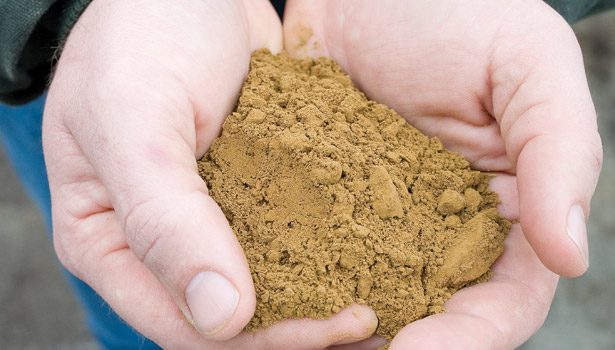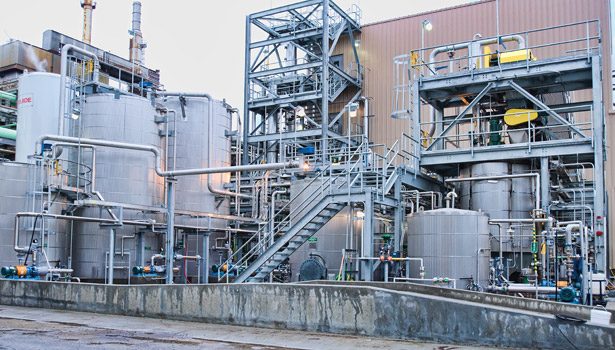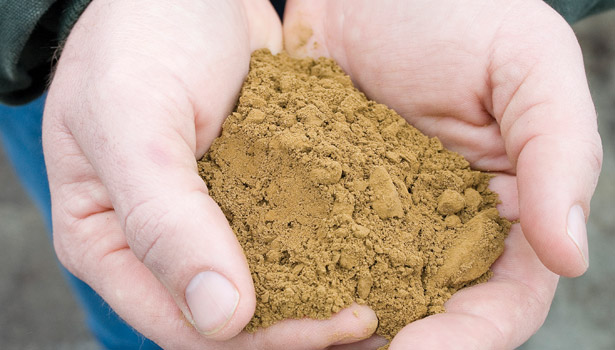Lignin in the Laboratory
The use of lignin could bring about a green, cost-effective way to develop adhesives and sealants.




A new source of lignin has been developed that produces a consistent quality for commercial quantities. It’s helping spur a push to reexamine the chemical process used to make adhesives and sealants, and the result could be a greener, more cost-effective alternative to synthetic elastomers and petrochemicals.
The use of lignin gained momentum last year, when a state-of-the-art, commercial-scale lignin separation plant was successfully installed in Plymouth, N.C.—the first U.S. facility of its type in more than 25 years. The project has so much potential that the Biomass Research and Development Initiative awarded a federal grant to the facility.
“A number of wood adhesives companies have been out there for a number of years asking if there are any products out there like this,” said Charles R. Frihart, who heads up the wood adhesives team for the U.S. Department of Agriculture’s Forest Products Laboratory. “There’s a desire to add more bio-based content.”
In addition to addressing environmental concerns, potential benefits can be found in terms of production costs and performance.
What Is Lignin?
Lignin is considered to be the “glue” that keeps a tree together. It is a polyaromatic material found in most living plants as an outcome of photosynthesis. Lignin is separated from wood during the pulping process, but lignin is not a byproduct or waste. It is a valuable fuel for production of pulp and paper products, and it can be used in many industries, including adhesives and sealants, thermoplastics, binders, and dispersants.
Much of lignin’s appeal is that it’s a large, non-petroleum source of aromatic materials, including phenols. Nearly all commercial phenolics currently come from petroleum, but isolated lignins from woody biomass provide a large, economically attractive source that is renewable and sustainable. Lignin is a non-toxic antioxidant and a water barrier; evidence shows that, in some cases, it can also serve as a fire retardant.
Manufacturers could use lignin as an additive for tapes, labels and wood adhesives. For primary adhesives, uses for lignin include serving as a tackifier to pressure-sensitive rosins, a binder for wood, wood composites and other hot-melt adhesives renewables, a plasticizer for oils, a base polymer for wood substrates, and in the displacement of phenol-formaldehyde binders for wood composite manufacture.
Lignin has beneficial properties, such as protection against thermo-oxidative aging and photolytic degradation. With those inherent properties, lignin can replace several different chemicals at the same time. Yet while the world’s pulp mills produce about 50 million metric tons of lignin annually, barely 2% of the lignin is converted to items of commerce, according to H.T. (Bert) DelliColli, an adjunct professor at North Carolina State University’s Department of Forest Biomaterials.
“Many potential lignin users are often unfamiliar with lignin; they think of it as a waste product or a byproduct of paper-making,” DelliColli said. “They need to learn to start treating it with respect as a feedstock with a complete chemical identity. It’s a question of matching the chemical with the chemical engineering.”
Decreasing Formaldehyde Usage
For years, producing a constant lignin quality remained a challenge. The chemical structure hinged largely on the wood raw material used in the pulping process, as well as the pulping process stability. As a result, not all lignins had a consistent reactivity to be used as, say, phenol-formaldehyde replacements. Help should come from the latest lignin-separation technology. Improvements in the developing process have resulted in a stable, more consistent quality product with less ash content.
The new, reliable source of lignin comes at a key time. Many plywood and strand, fiber, and particle boards are currently made with phenol-formaldehyde or urea-formaldehyde resins. Lignin would require less formaldehyde and can serve as a green adhesive alternative. It is abundantly available, and it can be derivatized, providing new uses for other types of adhesives.
For example, lignin can replace as much as 50% of the phenol used in resin synthesis. With some modification steps, the resins can be used for the production of wood panels such as plywood and oriented strand board. Reacting lignin with agents to increase or decrease the phenol content can improve its performance in specific applications. Modifying the molecular weight will influence flow properties, which can increase its performance in phenol-formaldehyde resin.
The sealant industry can also use lignin as a reinforcing agent. This can increase the rigidity of polyurethane sealants, for instance, because of the increase in toughness and modulus.
Researchers are studying how lignin can improve the physical and mechanical properties in polymer blends or be used as a possible alternative to petroleum-based feedstocks. Their work could lead to great opportunities for lowering costs. Markets are always dynamic, of course, but in some cases, using lignin could help reduce the cost of feedstock by 50%.
Growth in Green Adhesives
Green adhesive use continues to grow. Today, some estimate that natural components account for about 30% of all the raw materials used in adhesive formulations. The growth will only continue:
• Researchers are working on additional improvements. Waterborne adhesive systems are becoming more moisture resistant, for instance, by using additives and surfactant technology. Researchers are also developing reactive hot-melt adhesives that have performance properties on par with conventional thermosetting options.
• Markets are evolving. Scientists are making great advances in the way they refine bio-based feedstock and convert them to commercial products by using green chemistry and biorefineries. The focus will be on developing economical production processes, including the use of lignin as a biopolymer-based adhesive.
• Adhesive manufacturers will see their chemical processes change as they start to rely more on the raw materials produced by biopolymer manufacturers. Adhesives manufacturers should work with raw material suppliers and end users to provide both the optimal level of performance and the ecological product that customers demand.
Teaching Javelin Throwers to Shot Put
Each end user has different specifications; they need to communicate backward with suppliers to explain their technical requirements. After all, history has shown that improving performance requires some derivitization and chemical adjustment.
“You can’t just take a javelin thrower and say you need him to shot put, expect him to use the same procedure and get the same results,” said DelliColli. “You have to do the chemistry, the same as we first did with oil back in the 1800s.”
Speaking of oil, while current lignin will work in several applications, Professor Dimitris Argyropoulos of the department of Forest Biomaterials at NC State has suggested technical lignins may need refining if their potential as reactive polyphenols of well-defined molecular weight polymers and oligomers is to be actualized. This would be done in a manner similar to the refinement of crude oil.
Work at his laboratory has shown that a continuum of narrow fractions can be isolated and reproducibly manufactured irrespective of the manufacturing details of the pulping process. As such, Kraft lignin material may now offer consistently homogeneous lignin streams with significant ramifications in the adhesives and sealants industries since the materials are highly functional, narrow oligomeric phenolic feedstocks.
For additional information, call (877) 877-4682 or visit www.domtar.com/BioChoice.
Looking for a reprint of this article?
From high-res PDFs to custom plaques, order your copy today!






